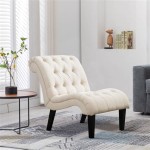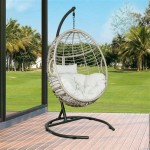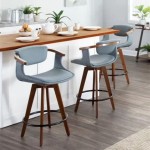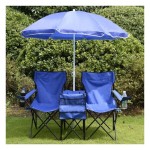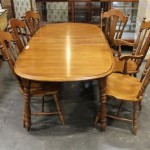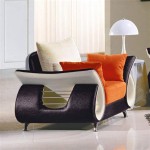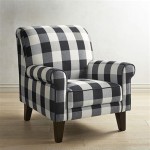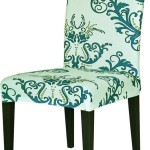Dining Chairs: Exploring the Enduring Appeal of Mid-Century Style
Mid-century modern style, characterized by clean lines, organic shapes, and a focus on functionality, remains a popular aesthetic choice for interior design. This enduring appeal extends significantly to dining room furniture, particularly dining chairs. Mid-century dining chairs offer a blend of comfort, style, and versatility, making them a favored option for both contemporary and traditional homes.
The mid-century modern movement, roughly spanning from the mid-1940s to the late 1960s, emerged as a reaction against the ornate and heavily decorated styles of previous eras. Designers sought to create furniture that was both aesthetically pleasing and practical for modern living. Mass production techniques were embraced, making well-designed furniture accessible to a wider audience. Materials such as molded plywood, fiberglass, plastic, and metal were frequently used, often combined with natural elements like wood. The result was a distinctive style that prioritized simplicity, elegance, and comfort.
Understanding the characteristics of mid-century modern dining chairs allows for informed selection and integration into various dining room settings. Key elements to consider include the materials used, the overall design aesthetic, and the chair's ergonomic features. Examining these aspects provides a comprehensive understanding of what makes this style so timeless and desirable.
Material Selection and Construction
The materials used in mid-century dining chairs are fundamental to their characteristic look and durability. Wood, typically in lighter tones like maple, birch, and teak, is a common choice for legs and frames. These hardwoods offer strength and stability while contributing to the overall warmth of the design. The wood is often finished with a clear coat to showcase the natural grain and provide protection against wear and tear.
Molded plywood played a significant role in the mid-century modern movement. Pioneering designers like Charles and Ray Eames experimented extensively with this material, creating chairs with gracefully curved seats and backs. Molded plywood chairs often feature a distinct organic shape that conforms to the body, enhancing comfort. The plywood is typically layered and laminated, providing structural integrity and resistance to warping or cracking.
Another prominent material is fiberglass, particularly in the form of molded shells. Fiberglass chairs are lightweight, durable, and available in a wide range of colors. These chairs are often paired with metal or wooden legs, creating a visually interesting contrast. The smooth, molded surface of fiberglass is easy to clean and maintain, making it a practical choice for dining room furniture.
Upholstery also plays a crucial role in the comfort and appearance of mid-century dining chairs. Common upholstery fabrics include vinyl, tweed, and other textured materials. Vinyl is a durable and stain-resistant option that is easy to clean, while tweed adds warmth and visual interest. The upholstery colors often reflect the era's design sensibilities, featuring muted tones, geometric patterns, or bold, saturated hues.
Metal, often in the form of chrome or painted steel, is frequently used for chair legs and frames. Metal provides strength and stability while contributing to the clean, minimalist aesthetic. Metal legs are often tapered or splayed outwards, a characteristic design element of the mid-century modern movement. The metal finish is typically polished or painted to complement the overall design of the chair.
Design Aesthetics and Key Features
Mid-century dining chairs are known for their clean lines, simple forms, and functional design. Unnecessary ornamentation is avoided, with a focus on highlighting the inherent beauty of the materials. The chairs are designed to be both visually appealing and comfortable for extended periods of sitting.
Tapered legs are a defining characteristic of mid-century modern furniture. These legs, which narrow towards the floor, create a sense of lightness and elegance. They are often angled outwards, providing stability and adding to the overall visual interest of the chair. Tapered legs can be made of wood or metal and are typically finished to complement the chair's overall design.
Another common design element is the use of organic shapes. Designers drew inspiration from nature, incorporating curved lines and rounded edges into their furniture designs. This is particularly evident in molded plywood and fiberglass chairs, which often feature seats and backs that conform to the body's natural contours.
The emphasis on functionality is a key aspect of mid-century modern design. Dining chairs are designed to be comfortable and supportive, allowing for enjoyable meal times. The chairs are often lightweight and easy to move around, making them practical for everyday use. The height and angle of the seat and back are carefully considered to ensure proper posture and comfort.
Color palettes typically seen in mid-century modern dining chairs range from muted earth tones to bold, saturated hues. Common colors include avocado green, mustard yellow, burnt orange, and teal. These colors are often used in combination with natural wood tones, creating a warm and inviting atmosphere. Geometric patterns, such as stripes, checks, and abstract shapes, are also frequently used in upholstery fabrics.
The minimalist approach to design extends to the overall form of the chair. Unnecessary details are eliminated, with a focus on showcasing the essential elements of the design. This results in chairs that are both elegant and understated, blending seamlessly into a variety of dining room settings. The simplicity of the design allows the chairs to complement other furniture pieces and décor elements without overwhelming the space.
Ergonomics and Comfort Considerations
While aesthetics are important, the comfort and ergonomic design of mid-century dining chairs are equally crucial. Chairs should provide adequate support for the back and legs, allowing for comfortable seating during meals and gatherings. Several design elements contribute to the ergonomic properties of these chairs.
The seat height is a critical factor in determining comfort. A seat that is too high or too low can cause discomfort and strain on the legs and back. The ideal seat height allows the feet to rest flat on the floor with the knees bent at a 90-degree angle. This promotes proper posture and reduces the risk of fatigue.
The backrest design also plays a significant role in providing support and comfort. A curved backrest that conforms to the natural curvature of the spine can help to reduce strain and promote good posture. The height of the backrest should be sufficient to provide support for the lower and mid-back. Some chairs feature lumbar support, which provides additional cushioning and support for the lower back.
The seat depth and width are important considerations for ensuring adequate space and comfort. A seat that is too shallow may not provide enough support for the thighs, while a seat that is too wide may cause discomfort and difficulty in maintaining proper posture. The ideal seat depth and width will vary depending on individual body size and shape.
Upholstery and cushioning can significantly enhance the comfort of mid-century dining chairs. A well-padded seat and backrest can provide additional cushioning and support, making the chair more comfortable for extended periods of sitting. The type of upholstery fabric can also affect comfort, with softer fabrics providing a more luxurious feel.
The overall construction and stability of the chair are also important factors in ensuring safety and comfort. A well-constructed chair should be sturdy and stable, without any wobbling or rocking. The legs should be securely attached to the frame, and the chair should be able to support the weight of the user without any signs of stress or strain.
In conclusion, mid-century modern dining chairs represent a harmonious blend of style, functionality, and comfort. Their enduring appeal lies in their clean lines, organic shapes, and use of high-quality materials. By carefully considering the material selection, design aesthetics, and ergonomic features, individuals can select mid-century dining chairs that enhance their dining room space while providing lasting comfort and style. The principles of this design movement continue to influence contemporary furniture design, solidifying its place as a timeless and influential aesthetic.

Lumisource Symphony Mid Century Walnut And Black Modern Dining Accent Chair With Faux Leather Ch Symp Wl Bk The Home

Golden Velvet Mid Century Modern Dining Chairs Upholstered Accent With Stainless Chrome Base Set Of 2 Fy W114367601 The Home

World Interiors Oxford Upholstered Dining Chair With Walnut Finish

Dining Chairs Set Of 2 Mid Century Modern Retro Faux Leather Chair With Walnut Bentwood Back Beige

Mid Century Dining Chairs Upholstered Faux Leather Walnut Set Of 2 Room Homary

Lacoo Pre Assembled Mid Century Modern Dining Chairs Set Of 4 Multiple Colors

55 Downing Street Nelson Green Fabric Mid Century Modern Dining Chair

Mid Century Modern Chairs By Annie Sloan

Ashcroft Furniture Co Roxy Mid Century Modern Black Vegan Leather Dining Chair Set Of 2 Ash3261

Kara Brown Wood Mid Century Modern Dining Chair Living Spaces
